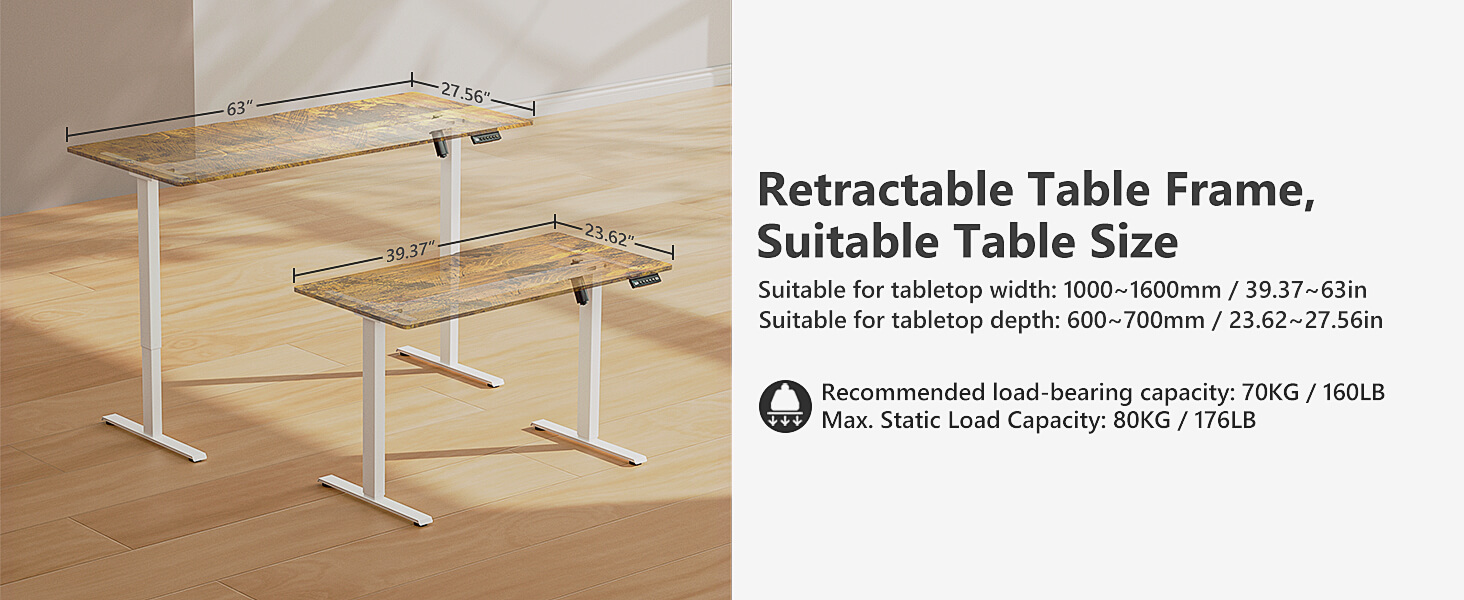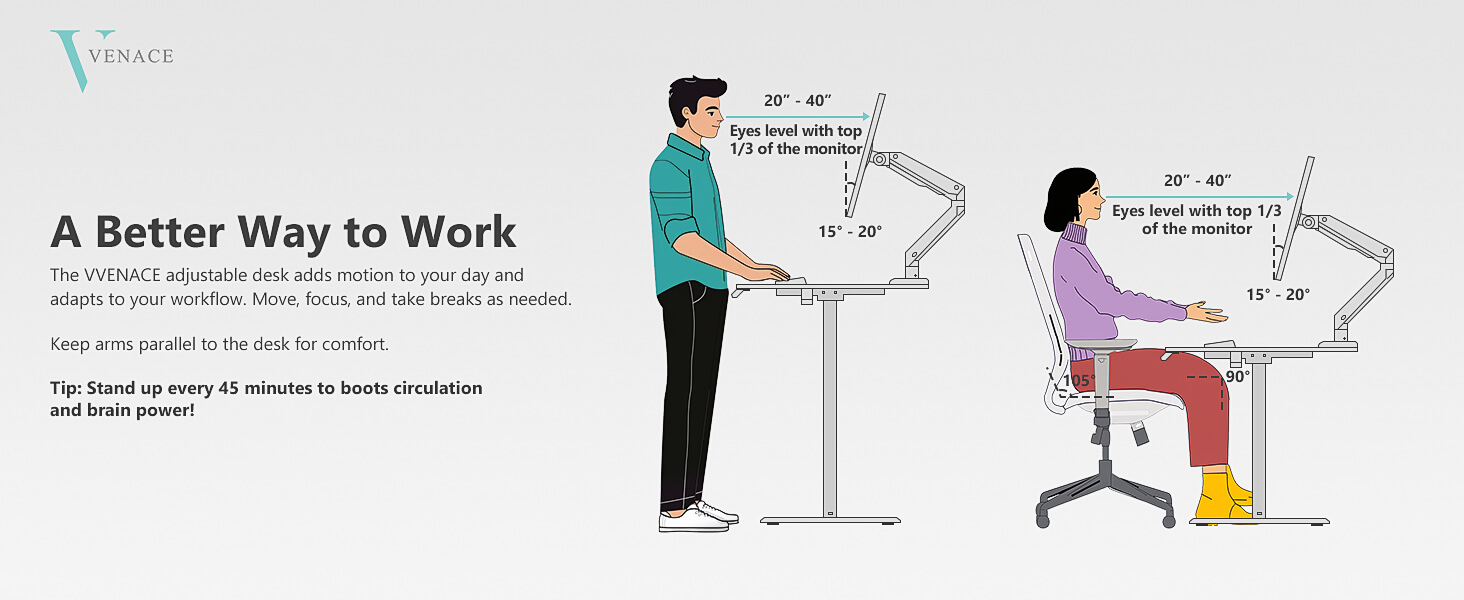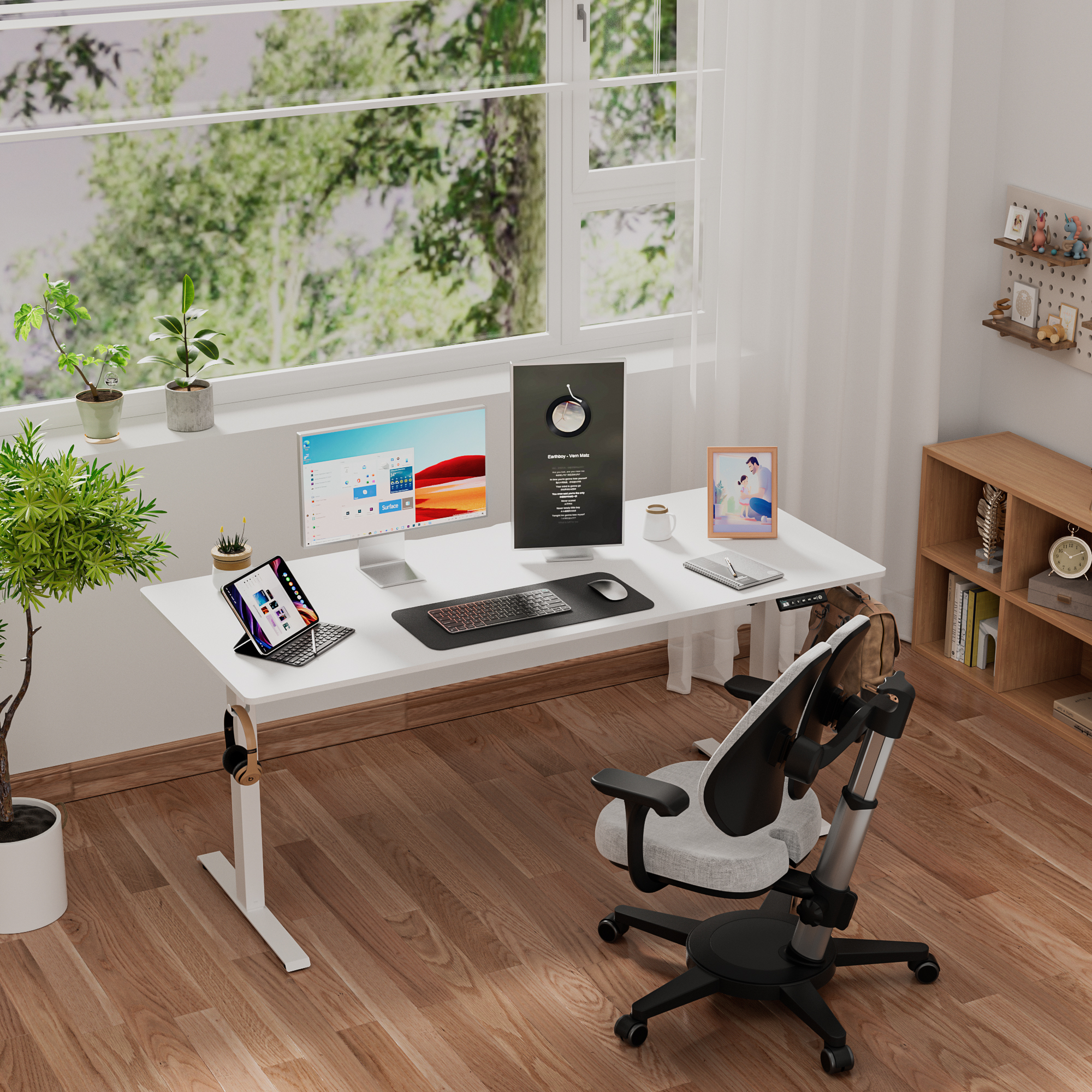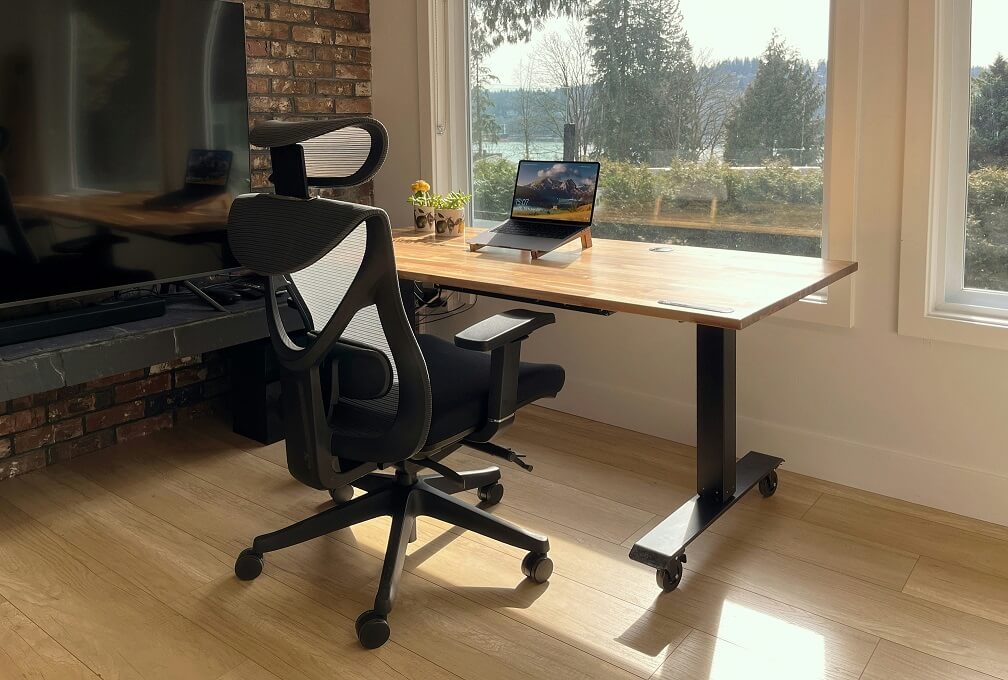The benefits of using a standing desk, or height adjustable desk, are well documented. From improving posture to enhancing energy levels, standing desks have become a go-to solution for many seeking to reduce the risks associated with prolonged sitting. However, standing for extended periods can also lead to its own set of problems, such as fatigue, muscle strain, and discomfort. So how can you make the most of your standing desk without experiencing the negative effects? The answer lies in smart adjustments and the use of ergonomic accessories that complement your stand-up desk.
In this article, we’ll explore how to set up your standing desk for maximum comfort and efficiency while avoiding fatigue. From proper posture adjustments to choosing the right accessories, we’ll give you practical tips to help you work better, feel better, and stay energized throughout the day.

Understanding Standing Desk Fatigue
Before we dive into how to prevent standing desk fatigue, it’s important to understand why it happens. Standing all day without proper support can be just as taxing on the body as sitting for long hours. When you stand without moving or adjusting your position, you put pressure on your lower back, legs, and feet. This pressure can lead to discomfort, poor circulation, and muscle fatigue.
The key to avoiding fatigue while using a standing desk is balance. It’s not about standing all day or sitting all day; it’s about alternating between the two in a way that works for your body. This balance, combined with smart ergonomic adjustments and accessories, can help you stay productive and comfortable, without succumbing to the discomfort associated with standing too long.
1. Adjust Your Standing Desk for Optimal Posture
The most critical factor in preventing fatigue while using a standing desk is ensuring proper posture. When your desk is set at the correct height, your body will naturally align to a position that minimizes strain and supports comfort. Here are a few adjustments you can make to get your standing desk setup right:
a) Desk Height for Standing
When standing, your desk height should allow your arms to be at a 90-degree angle, with your forearms parallel to the floor. Your hands should hover comfortably above the keyboard, and your wrists should not bend. If your desk is too high, you’ll have to raise your shoulders, leading to neck and shoulder tension. If it’s too low, you might lean forward, which can cause back and hip discomfort.
A good rule of thumb is that the desk should be at about elbow height when standing. You want your body to be in a neutral position without straining to reach or hunch over the desk.
b) Monitor Position
Your monitor should be positioned at eye level to avoid straining your neck. The top of the screen should be at or slightly below your eye level, and you should be able to view it without tilting your head up or down. The monitor should also be about 20 to 30 inches away from your eyes to reduce eye strain. Adjusting your screen properly will help maintain a natural neck and back position, which is crucial in preventing fatigue.
c) Foot Position and Footrest
While standing, keep your feet flat on the ground, and distribute your weight evenly. Standing with all your weight on one leg can cause muscle fatigue and discomfort over time. A footrest or footstool can be a great addition to your standing desk setup, allowing you to shift your weight between your legs and reduce strain on your lower back.

2. Alternate Between Sitting and Standing
One of the main benefits of using a height adjustable desk is the ability to switch between sitting and standing positions throughout the day. Standing for extended periods without movement can lead to fatigue, just as sitting for too long can have adverse effects on your posture and health. The key is to find a balance between the two.
a) Create a Schedule
To avoid fatigue, try alternating between sitting and standing every 30 minutes to an hour. You don’t need to stand all day; just stand for intervals and take regular sitting breaks. This will reduce the strain on your back and legs, while also preventing the stiffness and discomfort caused by sitting too long.
b) Listen to Your Body
Everyone’s body is different, so it’s important to pay attention to your own comfort. If you start to feel fatigued, take a break and sit down. If you’re sitting too long and feel stiff or sluggish, switch to standing. Over time, you’ll find a rhythm that works best for you.

3. Invest in Ergonomic Accessories
While adjusting your standing desk setup is crucial, ergonomic accessories can enhance your comfort and help you avoid fatigue. Here are a few accessories that can make a significant difference:
a) Anti-Fatigue Mats
Standing on hard surfaces for long periods can lead to discomfort in your feet, legs, and lower back. Anti-fatigue mats provide cushioning that helps reduce the pressure on your joints and muscles while standing. These mats are designed to promote subtle movements, which can increase circulation and reduce the feeling of fatigue.
b) Standing Desk Converter
If you’re not ready to commit to a full standing desk, a standing desk converter can be a great alternative. These adjustable platforms sit on top of your regular desk, allowing you to easily switch between sitting and standing positions. This gives you the flexibility to adjust your workspace without the need for a completely new desk.
c) Keyboard and Mouse Positioning
When standing, it’s important to ensure that your keyboard and mouse are positioned correctly to avoid strain on your wrists and arms. Keep your arms at a 90-degree angle when typing, and ensure that your wrists remain straight. A keyboard tray or adjustable mouse platform can help keep these devices at the right height and reduce strain on your hands and wrists.
4. Take Movement Breaks
Incorporating movement into your day is essential for avoiding fatigue and staying energized. Whether you’re sitting or standing, prolonged stillness can lead to muscle stiffness and discomfort. The best way to combat this is to take short movement breaks every hour. Simple stretches, light walking, or even just shifting your weight can improve circulation and refresh your body.
a) Stretching
Stretching throughout the day can help reduce tension in your neck, shoulders, and lower back. Focus on stretching the muscles that are most affected by prolonged sitting and standing. A quick stretch every 30 minutes can do wonders for your comfort and energy levels.
b) Walk Around
Take the opportunity to walk around whenever possible. Whether it’s a short stroll to the water cooler or a few laps around your workspace, moving your body regularly keeps blood flowing and reduces the risk of fatigue.
5. Stay Hydrated and Energized
Fatigue is often linked to dehydration and poor energy levels. Drinking plenty of water throughout the day keeps your body hydrated and helps prevent fatigue. Additionally, take time to eat nutritious meals and snacks that will fuel your energy levels. Avoid too much caffeine, as it can lead to energy crashes, and instead focus on foods that provide sustained energy, like fruits, nuts, and whole grains.
Conclusion
Standing desks, including stand-up desks and height adjustable desks, offer a wealth of benefits for those seeking to improve posture and reduce the risks of prolonged sitting. However, standing for long periods can also lead to fatigue if not managed properly. By making smart adjustments to your desk setup, alternating between sitting and standing, and using ergonomic accessories, you can create a workspace that minimizes strain and maximizes comfort.
Remember, the key to avoiding standing desk fatigue is balance. Listen to your body, adjust your desk to suit your needs, and take breaks throughout the day. By doing so, you’ll be able to enjoy the many benefits of your standing desk while staying energized, productive, and pain-free.
